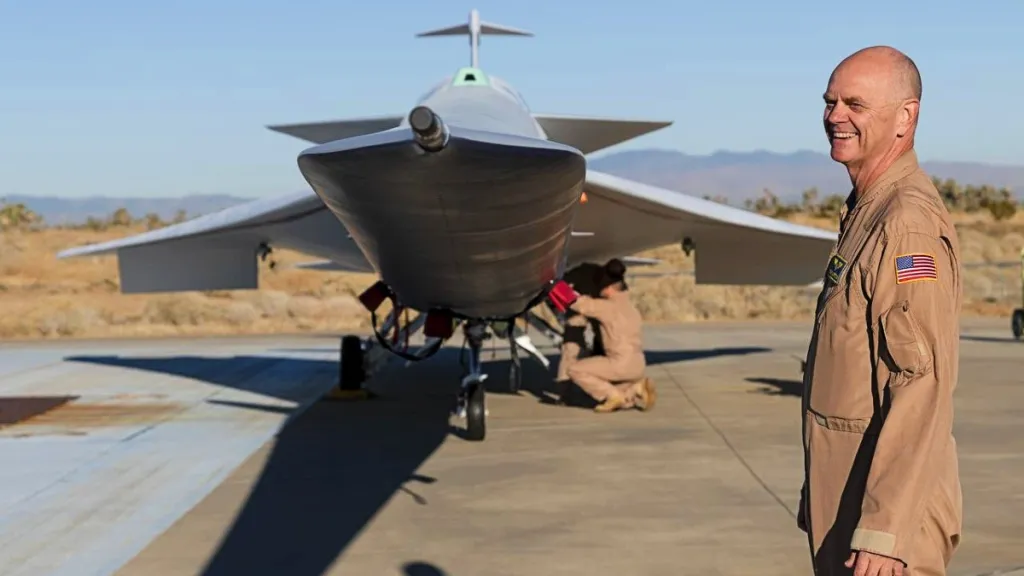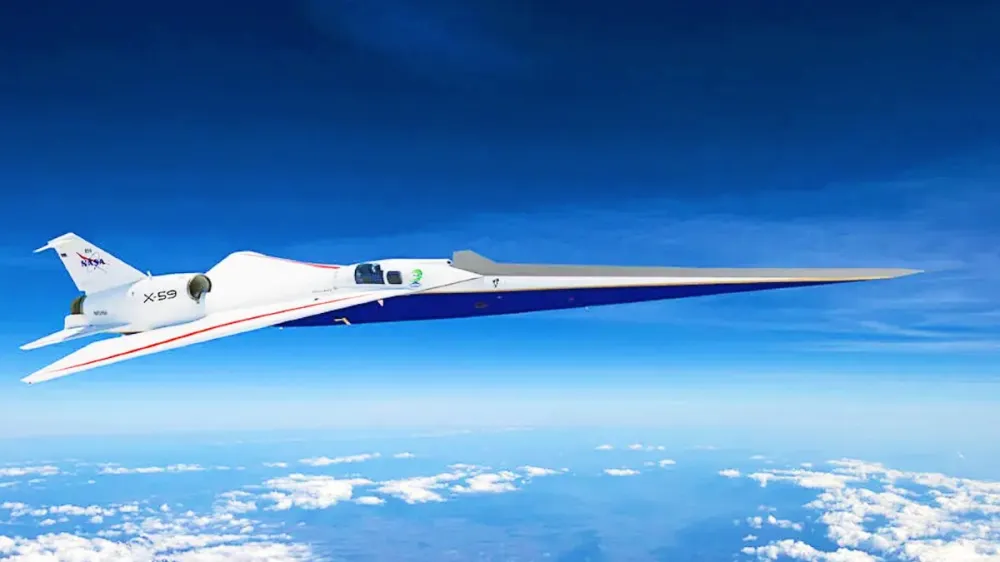แนวคิดเกี่ยวกับเครื่องบิน supersonic ที่มีความเร็วเหนือเสียงดึงดูดความสนใจของผู้คนมานาน ด้วยสัญญาว่าจะปฏิวัติวงการการบินโดยย่นระยะเวลาการเดินทางให้สั้นลงอย่างมาก บริษัทต่างๆ อย่าง Boom, Spike และ Exosonic ต่างมุ่งมั่นพัฒนาเครื่องบิน supersonic ที่มีความเร็วตั้งแต่ Mach 1.4 ถึง Mach 5.0 อย่างไรก็ตาม ความก้าวหน้าในด้านนี้ยังคงติดขัดด้วยข้อจำกัดทางเทคนิคที่สำคัญ โดยเฉพาะอย่างยิ่งคือ การแก้ปัญหาเสียงบูม (sonic boom) อันน่ารำคาญที่เกิดขึ้นจากเครื่องบินที่เคลื่อนที่เร็วกว่าเสียง
โครงการ X-59 Quesst ของ NASA ซึ่งพัฒนาขึ้นร่วมกับ Lockheed Martin มุ่งแก้ไขปัญหานี้ด้วยการออกแบบเครื่องบินที่สามารถสร้าง “เสียงบูมที่เบา” (quiet boom) ซึ่งไม่ส่งผลกระทบต่อประชาชนภาคพื้นดิน โดยมุ่งเน้นการปรับเปลี่ยนกฎระเบียบการบินอิงตามระดับเสียงแทนความเร็ว โครงการ X-59 ตั้งเป้าที่จะปูทางสู่การนำเที่ยวบิน supersonic เชิงพาณิชย์กลับมาบินเหนือพื้นดินอีกครั้ง ด้วยหลักอากาศพลศาสตร์อันชาญฉลาดและการทดสอบอย่างละเอียด NASA มุ่งมั่นที่จะแสดงให้เห็นถึงความเป็นไปได้ของการเดินทางด้วยความเร็วเหนือเสียง โดยปราศจากผลกระทบด้านเสียงรบกวน

X-59 มาด้วยรูปทรงที่เพรียวลมและเทคโนโลยีขั้นสูง นับเป็นก้าวสำคัญในการพัฒนาเครื่องบิน supersonic โดยนำชิ้นส่วนจากเครื่องบินที่มีอยู่เดิมมาประยุกต์ใช้ ร่วมกับการออกแบบเครื่องยนต์ที่ติดตั้งด้านบนลำตัว ซึ่งช่วยลดความรุนแรงของเสียงบูม ขณะเดียวกันก็ยังคงรักษาสมรรถนะความเร็วสูงไว้ การทดสอบการบินของ X-59 คาดว่าจะเริ่มขึ้นในเร็วๆ นี้ โดยมีเป้าหมายในการเก็บข้อมูลเพื่อสนับสนุนการพิจารณาปรับกฎระเบียบเกี่ยวกับข้อจำกัดการบินของเครื่องบิน supersonic

แม้จะยังมีอุปสรรคด้านเทคนิคและการเงิน แต่ผู้คนในวงการการบินต่างมีความหวังว่าจะสามารถเอาชนะอุปสรรคเหล่านี้ได้ บริษัทอย่าง Spike Aerospace และ Exosonic ต่างก็มุ่งมั่นหาแนวทางแก้ไขปัญหาด้านเสียงบูม ควบคู่ไปกับการพัฒนาเชื้อเพลิงทางเลือกเพื่อแก้ไขปัญหาด้านสิ่งแวดล้อม แม้เส้นทางสู่อนาคตของการบิน supersonic เชิงพาณิชย์อาจยาวและซับซ้อน แต่ด้วยความมุ่งมั่นพัฒนาอย่างต่อเนื่อง ความฝันในการเดินทางทางอากาศด้วยความเร็วเหนือเสียง ก็น่าจะกลายเป็นจริงภายใน 10 ปีข้างหน้านี้
จากบทความโดย J. George Gorant
The prospect of supersonic commercial flights has captured the imagination of many, promising to revolutionize air travel by drastically reducing flight times. Companies like Boom, Spike, and Exosonic are at the forefront of this endeavor, each with its own vision for supersonic jets capable of reaching speeds between Mach 1.4 and Mach 5.0. However, progress in this field is hindered by significant technical challenges, particularly the issue of mitigating the disruptive sonic boom generated by aircraft flying faster than the speed of sound.
NASA’s X-59 Quesst project, developed in collaboration with Lockheed Martin, aims to address this challenge by designing an aircraft capable of producing a “quiet boom” that is tolerable to people on the ground. By rethinking regulations based on sound rather than speed, the X-59 seeks to pave the way for the reintroduction of commercial supersonic flight over land. Through innovative aerodynamics and extensive testing, NASA is striving to demonstrate the feasibility of supersonic travel without the adverse effects of sonic booms.
The X-59, with its sleek design and advanced technology, represents a significant step forward in this endeavor. By incorporating components from existing aircraft and utilizing a top-mounted engine configuration, the X-59 aims to minimize the intensity of sonic booms while maintaining high performance. Flight tests of the X-59 are expected to commence soon, with the goal of gathering data to support regulatory reconsideration of supersonic flight restrictions.
Despite the technical and financial challenges facing supersonic travel, there is optimism within the industry that these hurdles can be overcome. Companies like Spike Aerospace and Exosonic are also actively pursuing solutions to mitigate sonic booms, while exploring alternative fuels to address environmental concerns. While the path to commercial supersonic flight may be long and complex, there is confidence that with continued innovation and perseverance, the dream of faster-than-sound air travel will become a reality within the next decade or so.
From the article by J. George Gorant









